Hands-On with the Girard-Perregaux Tri-Axial Tourbillon – LIVE photos & Pricing
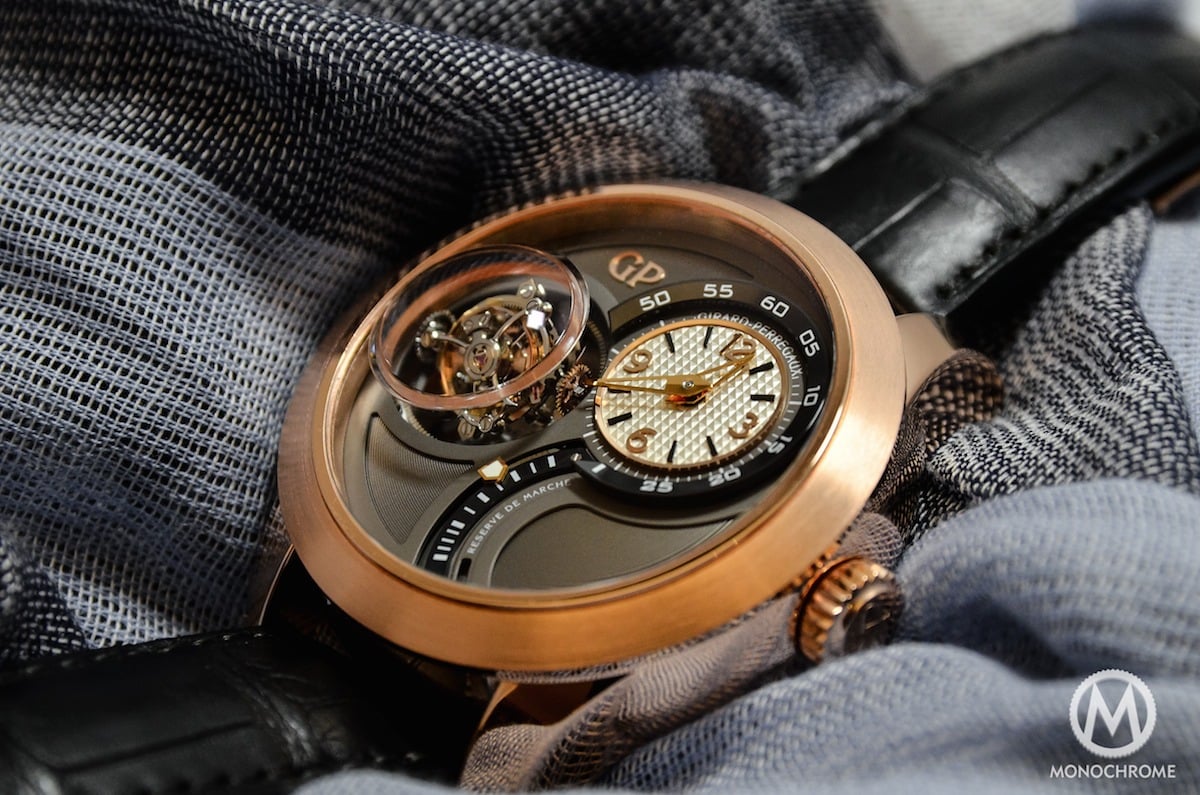
A tourbillon is already a symphony that every watch-lover wants to have on his wrist. It may be technically useless in a wristwatch but the ‘ballet of the regulator’ is always fascinating. Is a 600bhp Lamborghini rational, with all the speed limits? Definitely not! So what’s the point with a tourbillon rotating not over one but over three axes? To outstrip the limits, to show the technical expertise of watchmakers and for the owner: to dream. Only a few manufactures are competent enough to achieve such a complication, as for example Vianney Halter with his Deep Space Tourbillon. Girard-Perregaux already demonstrated its innovative capacity, with their GPHP-winning Constant Escapement LM. With the Tri-Axial Tourbillon, they show that they’re are part of the traditional Haute Horlogerie.
Triple-axis tourbillons are rare, very hard to manufacture and especially difficult to adjust. That’s the sort of traditional watchmaking achievement – yes, it’s traditional, nothing is really innovative here – that has to be contemplated and praised. The Girard-Perregaux Tri-Axial Tourbillon is not an industrial or technical prowess but a demonstration of real horological capabilities. It is traditional because it uses a known complication and usual materials, although used in a rather complex way. And that’s the main point of interest here.
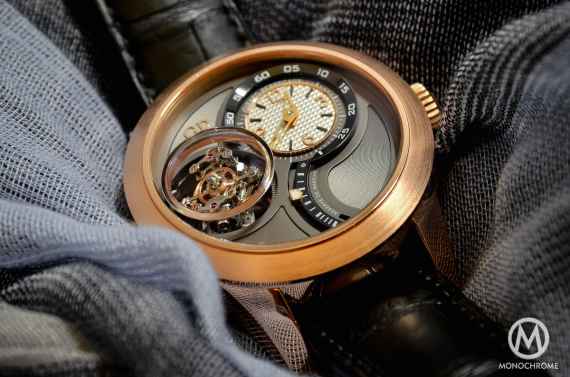
A ‘usual’ tourbillon makes the balance wheel rotates over a single axis, to compensate the effect of gravity, which has its influence on the stability of the watch and its precision. In a tri-axial tourbillon, the cage of the balance wheel rotates on itself but it also rotates over a vertical axis and over a horizontal axis, so the regulation system is never in the same position.
In the Girard-Perregaux Tri-Axial Tourbillon, the tourbillon cage rotates in a classical 60 seconds, like most tourbillons, and beats at 21.600vph or 3Hz. The whole cage is integrated into a second structure that rotates over a vertical axis in 30 seconds. The last structure that comprises the others, is performing a full rotation in 2 minutes over a horizontal axis. The main difficulty here is to find the perfect balance and make a mechanism that is strong enough, that measures only 13.78mm –which is huge for a tourbillon but very small when talking about manufacturing,finishing, or assembling– and includes 140 parts, and weighs just 1.24 grams.
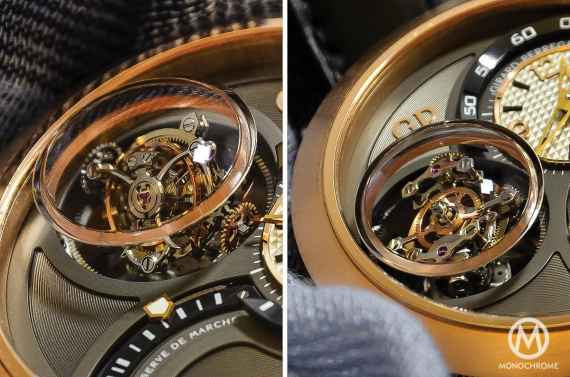
The back of the movement looks very clean and also demonstrates Haute Horlogerie skills. The main plate is treated with a frost effect and two arrow bridges, trademark of Girard-Perregaux, are feature very nice polished and bevelled angles and a straight brush finish on the flat surfaces. All the bridges and plates are of course hand-finished.
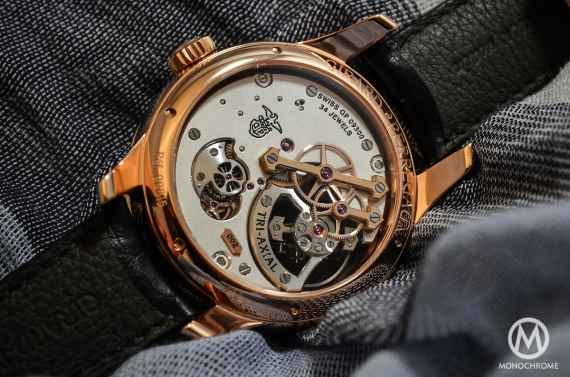
We are talking about a big movement here, with a diameter of 36.1mm and a height of 16.8mm – thickness that is mainly due to the cage of the tourbillon. For that reason, the Tri-Axial Tourbillon is a large watch of 48mm in diameter. The 18k pink gold case presents a brushed finish on the bezel and a mirror polished finish on the sides and the back. In order to highlight the tourbillon, the left side of the case presents an aperture and a domed sapphire crystal is applied on the top of the main crystal. Clearly, the watch is thick and the diameter makes it hardly wearable on a daily basis. But that’s not the goal this watch. Don’t forget that this is not your average daily beater.
On the dial, the major attraction is of course the ballet of the tourbillon that you can see in an aperture at 9 o’clock. The rest of the dial is clean and graphic, with concentric stripes in a dark grey tone. The only indications are the time at 2 with a silver ‘Clous de Paris’ guilloche sub-dial and a linear power reserve indicator at 6.
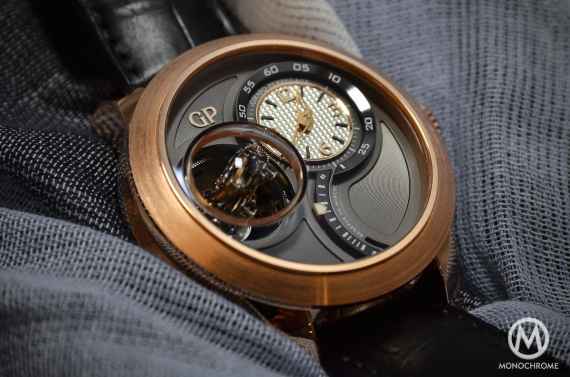
The Tri-Axial Tourbillon is technically impressive and confirms that Girard-Perregaux is one of the serious contesters in true Haute Horlogerie collection. This watch will only be made in 10 pieces and will be available in August for € 440.700 Euros.
Some specifications:
- Case: 48mm, 18k pink gold, anti-reflective sapphire with dome to cover the tourbillon, anti-reflective domed sapphire case-back, apertures on the side to reveal the movement, water resistant to 30m
- Movement: GP09300-0001, manual winding movement, 52h power-reserve, frequency: 21,600 vph (3Hz), 317 components, including 34 jewels and 140 components for the tourbillon, triple-axis tourbillon, one rotation every 1 minute on the first axis, every 30 seconds on the second axis, every 2 minutes on the third axis, all components of the movement are finished by hand
- Functions: Tri-Axial tourbillon, hour, minute, power reserve indicator
More info: www.girard-perregaux.com

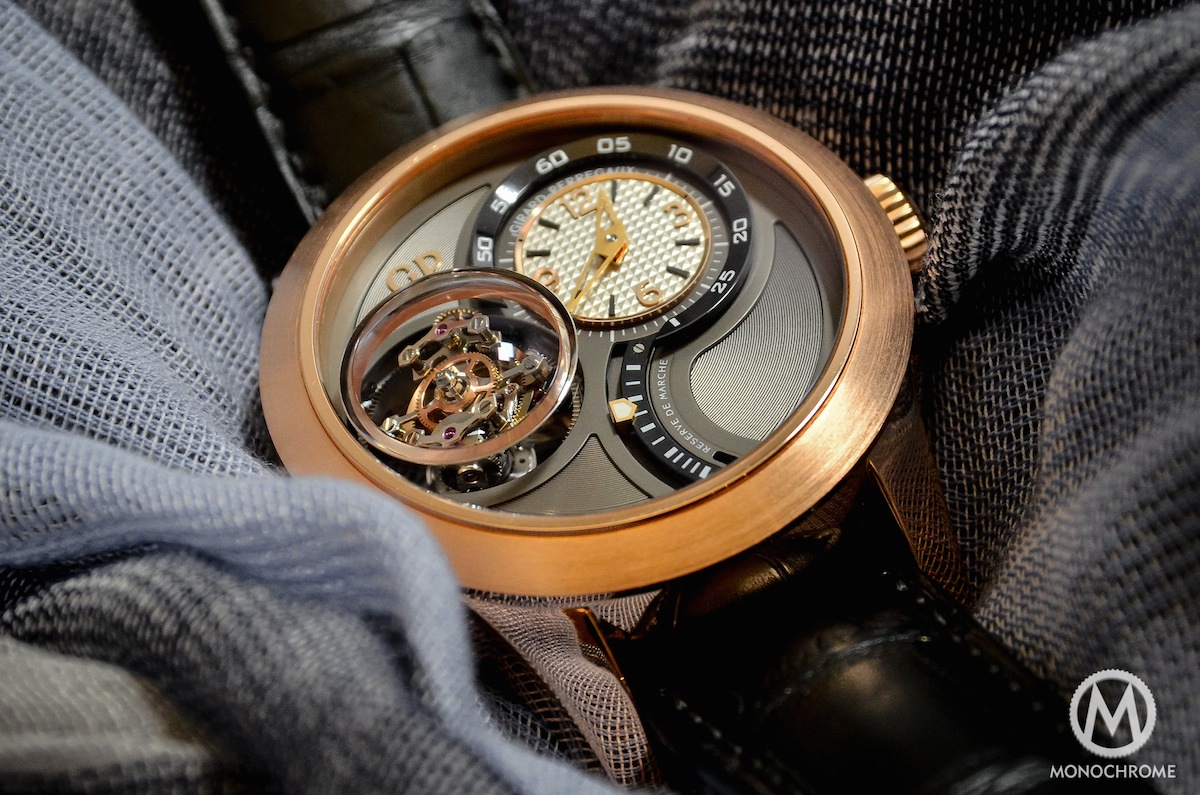
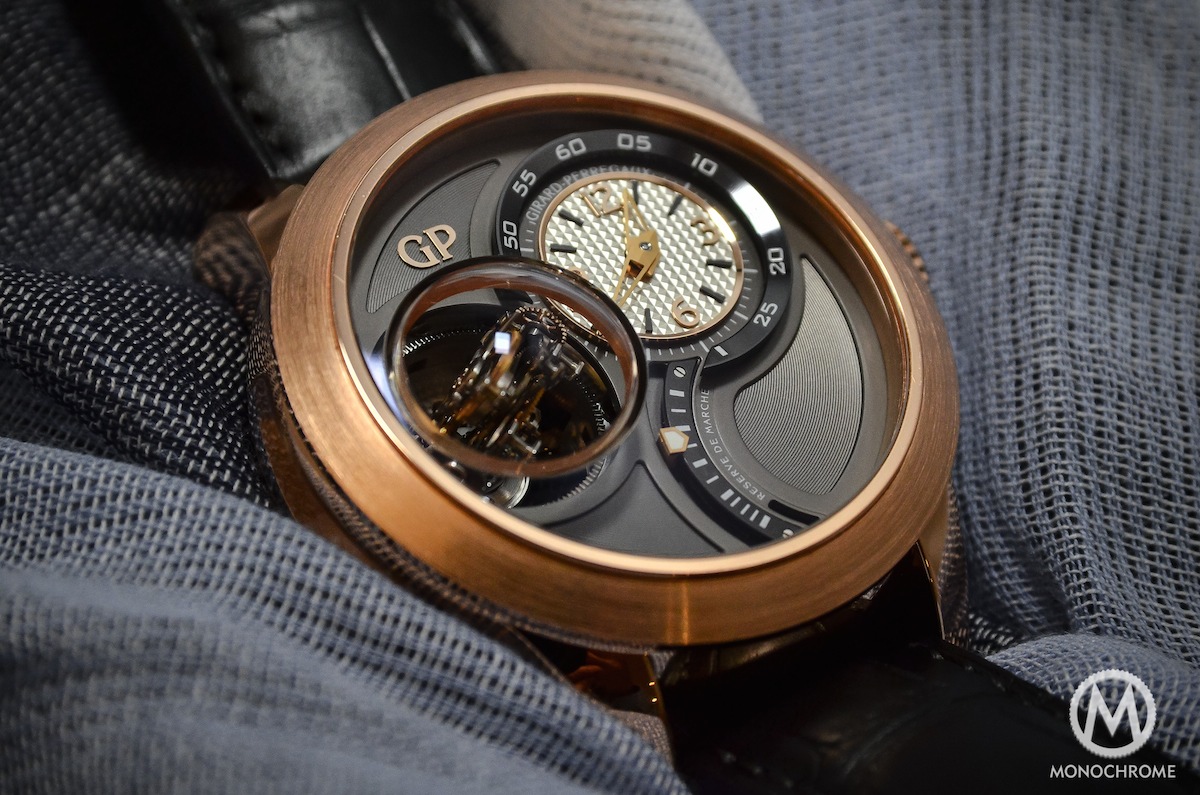
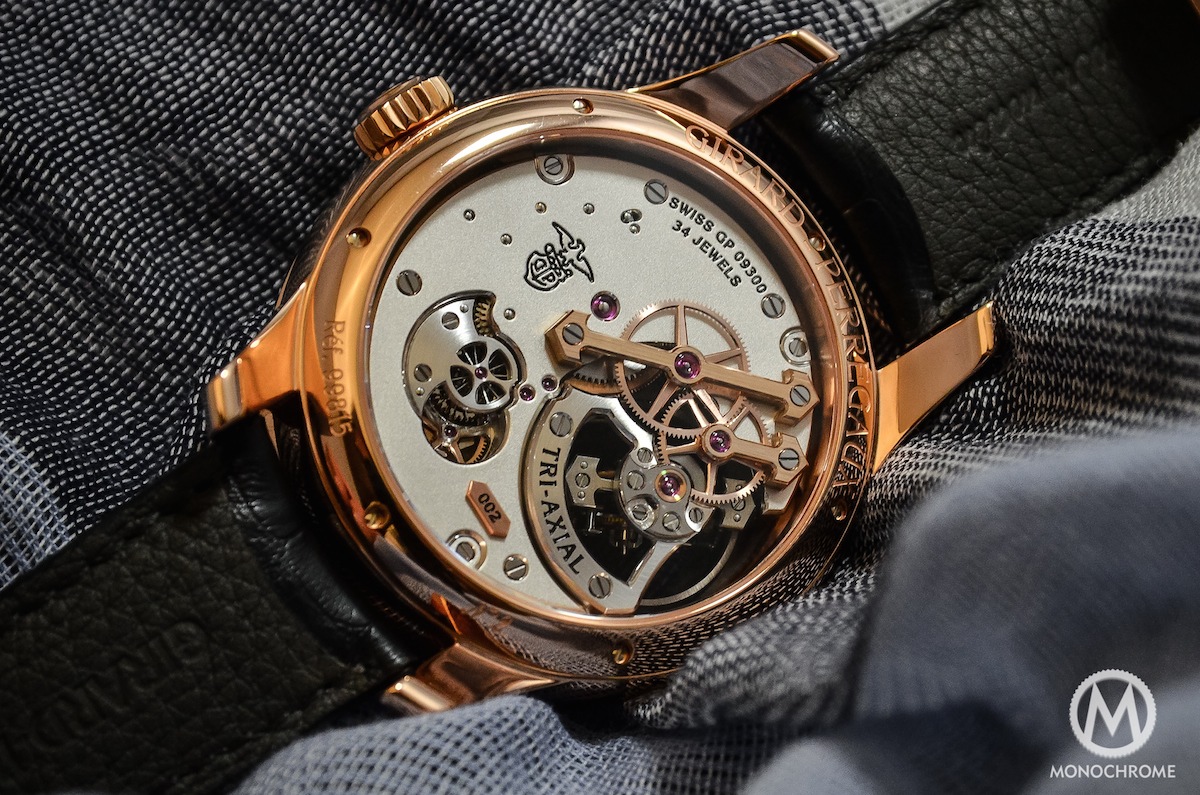
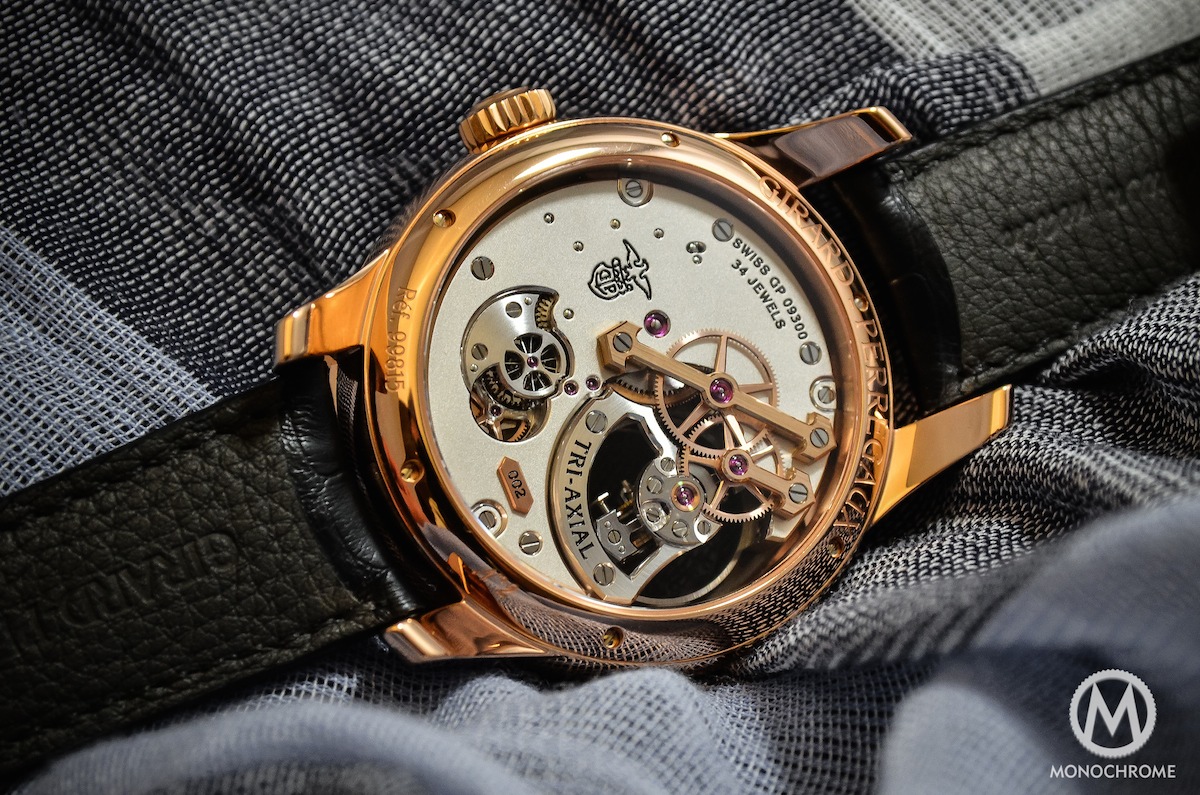
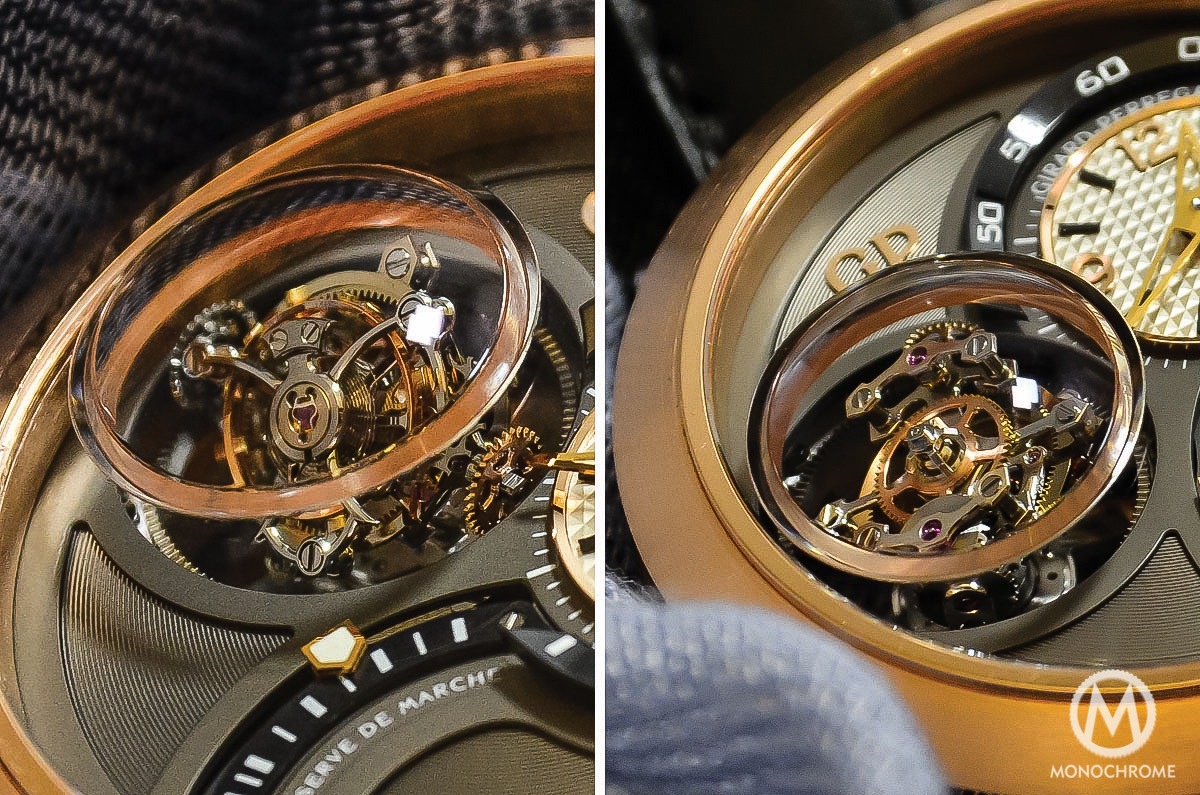
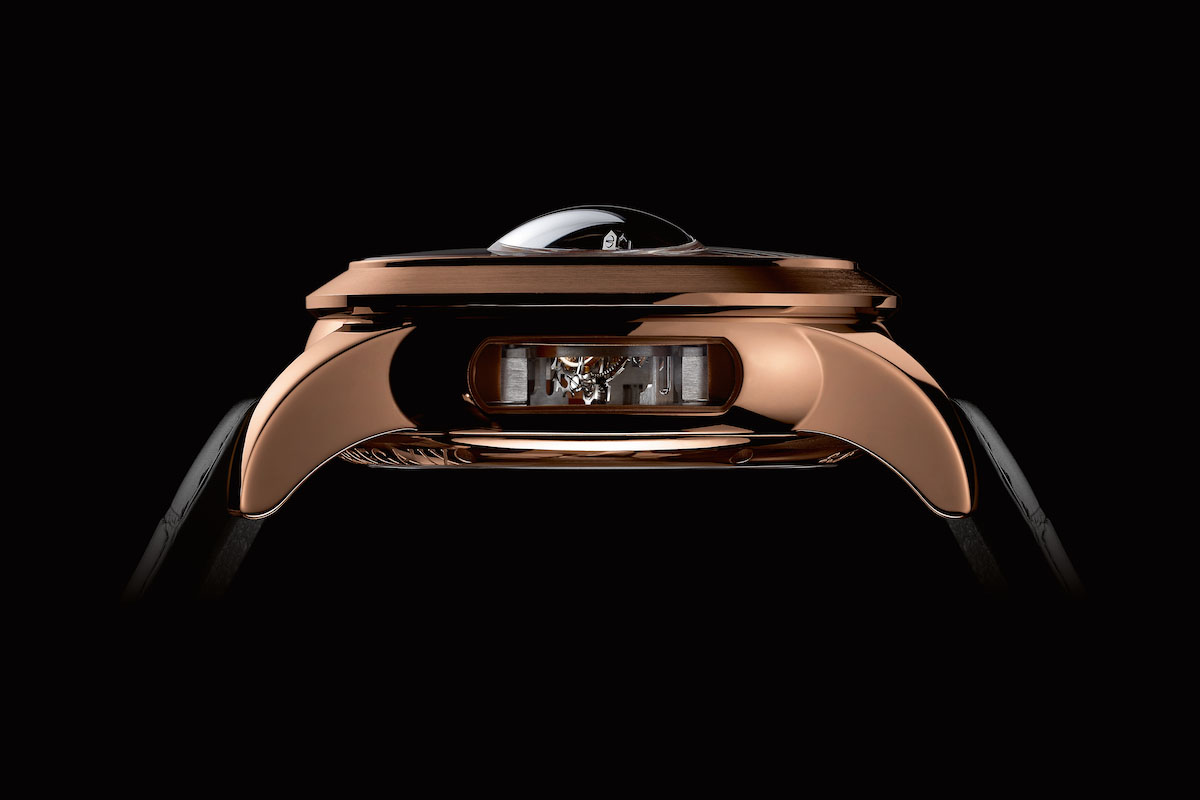



1 response